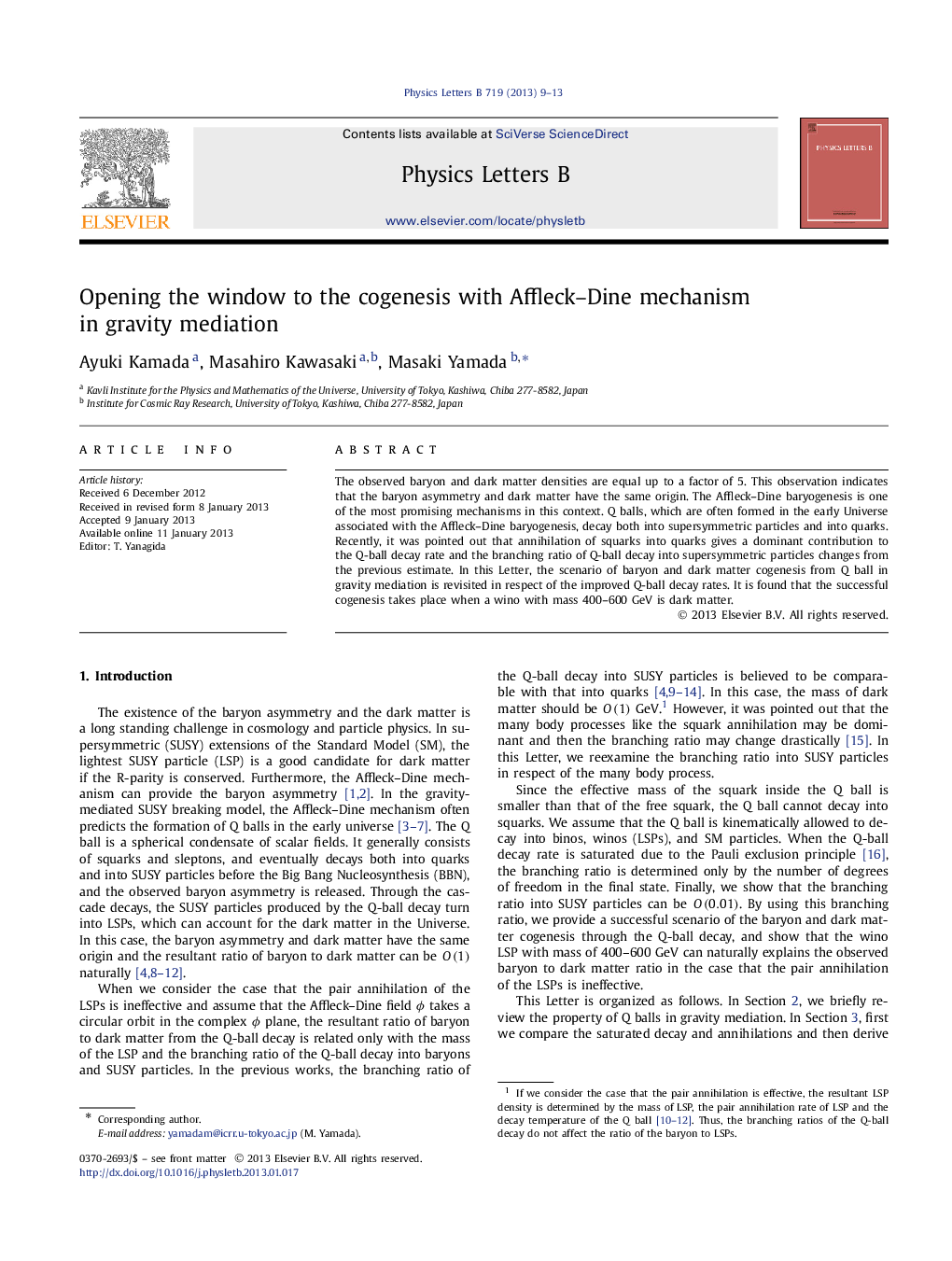| Article ID | Journal | Published Year | Pages | File Type |
|---|---|---|---|---|
| 8189172 | Physics Letters B | 2013 | 5 Pages |
Abstract
The observed baryon and dark matter densities are equal up to a factor of 5. This observation indicates that the baryon asymmetry and dark matter have the same origin. The Affleck-Dine baryogenesis is one of the most promising mechanisms in this context. Q balls, which are often formed in the early Universe associated with the Affleck-Dine baryogenesis, decay both into supersymmetric particles and into quarks. Recently, it was pointed out that annihilation of squarks into quarks gives a dominant contribution to the Q-ball decay rate and the branching ratio of Q-ball decay into supersymmetric particles changes from the previous estimate. In this Letter, the scenario of baryon and dark matter cogenesis from Q ball in gravity mediation is revisited in respect of the improved Q-ball decay rates. It is found that the successful cogenesis takes place when a wino with mass 400-600 GeV is dark matter.
Related Topics
Physical Sciences and Engineering
Physics and Astronomy
Nuclear and High Energy Physics
Authors
Ayuki Kamada, Masahiro Kawasaki, Masaki Yamada,
